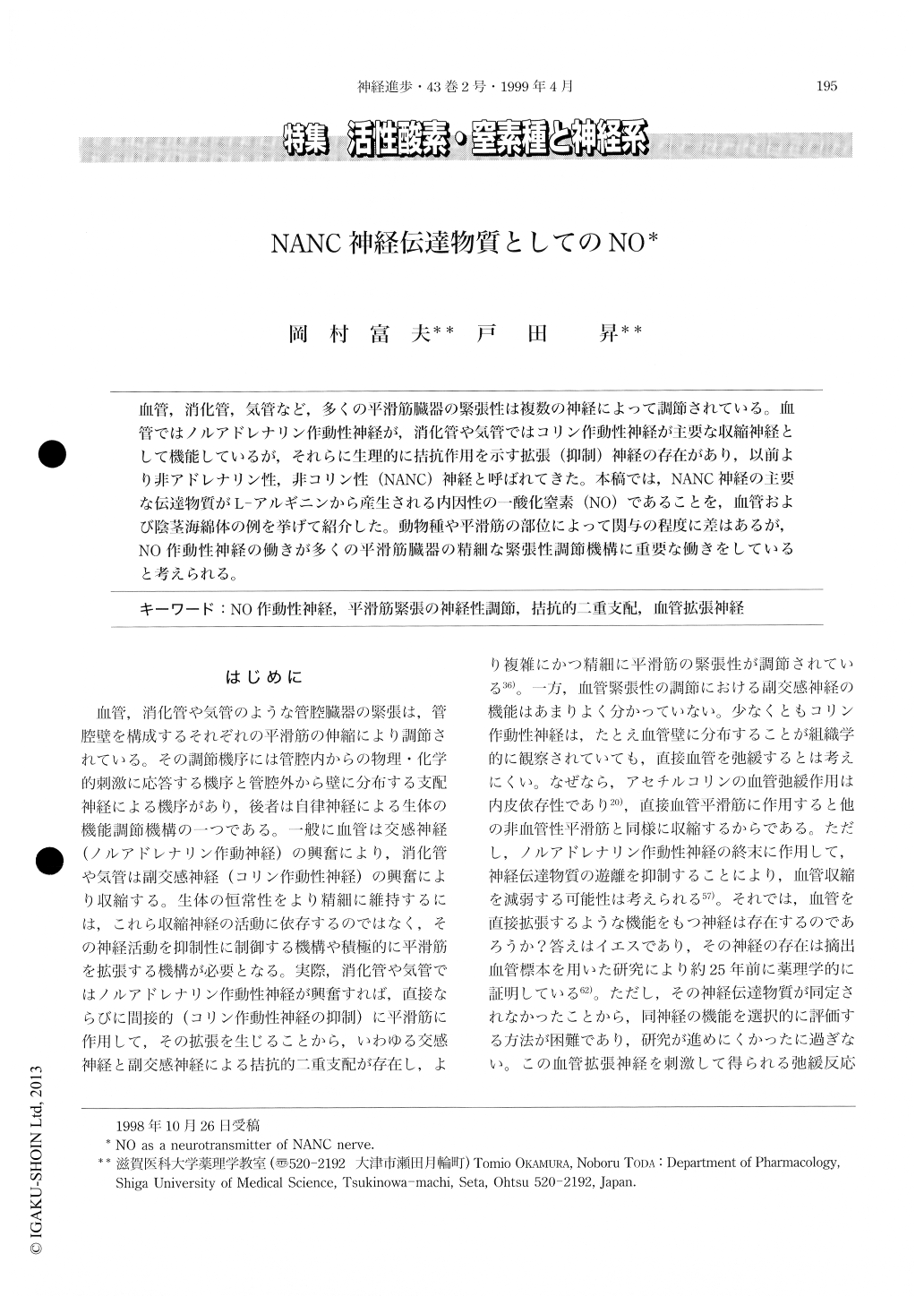Japanese
English
- 有料閲覧
- Abstract 文献概要
- 1ページ目 Look Inside
血管,消化管,気管など,多くの平滑筋臓器の緊張性は複数の神経によって調節されている。血管ではノルアドレナリン作動性神経が,消化管や気管ではコリン作動性神経が主要な収縮神経として機能しているが,それらに生理的に拮抗作用を示す拡張(抑制)神経の存在があり,以前より非アドレナリン性,非コリン性(NANC)神経と呼ばれてきた。本稿では,NANC神経の主要な伝達物質がL-アルギニンから産生される内因性の一酸化窒素(NO)であることを,血管および陰茎海綿体の例を挙げて紹介した。動物種や平滑筋の部位によって関与の程度に差はあるが,NO作動性神経の働きが多くの平滑筋臓器の精細な緊張性調節機構に重要な働きをしていると考えられる。
Smooth muscle tone in the vascular, digestive, respiratory and genital systems is regulated by more than one kind of nerves. Noradrenergic nerve mainly functions as a constrictor in the vascular system, whereas cholinergic nerve does so in the other systems. Presence and importance of dilator (inhibitory) nerves which physiologically antagonize these constrictor nerves have been recognized in a variety of smooth muscle organs, however, neurotransmitter (s) of the nerve has long been unidentified. Since the function of this nerve is not affected by antagonists of adrenoceptors or muscarinic acetylcholine receptors, the nerve has been termed as non-adrenergic, non-cholinergic (NANC) nerve. Recent studies have demonstrated that nitric oxide (NO) can be endogenously synthesized via a catalysis of L-arginine by NO synthase in a variety of cells, and the lipophillic gas acts as an intercellular signalling molecule in different systems. By the use of NO synthase inhibitors, soluble guanylate cyclase inhibitors and NO adsorbants, it became clear that endogenous NO is mainly involved in the NANC neurotransmission. The neurotransmitter of NANC nerves such as vasodilator nerves, inhibitory nerves of the gastrointestinal smooth muscles and dilator nerves of corpus cavernosum can be considered to be NO or NO-containing molecule. The extent of the influence of the NO-mediated nerves (nitroxidergic nerves) in the control of smooth muscle tone may vary with different locations, organs and animal species, but a broad view of the physiological roles and pathophysiological implications of nitroxidergic transmission will contribute to the new understanding of the smooth muscle physiology and pathophysiology, and to the development of therapeutic agents that interact with this neurotransmission.

Copyright © 1999, Igaku-Shoin Ltd. All rights reserved.


